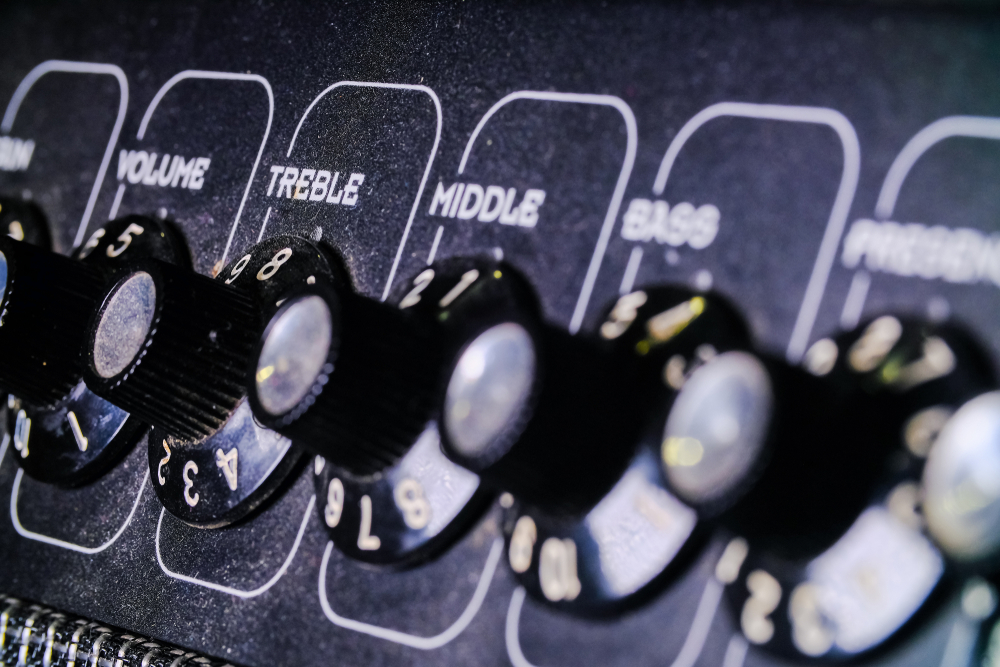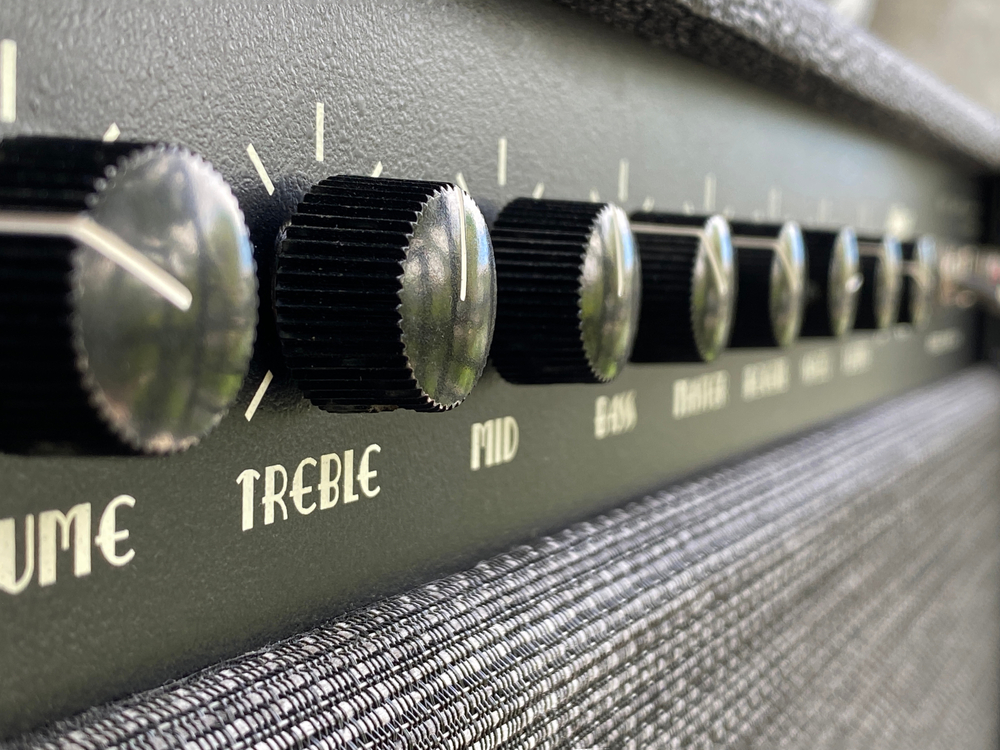Treble is an essential part of musical knowledge and something that you will often see discussed when it comes to sound mixing or reading sheet music. If you are just getting started out learning about music and don’t quite understand what treble is, have no fear. In this article, we will discuss exactly what treble is and why it is important that you understand it.
Understanding Sound Frequencies
There are multiple components to sound frequencies and treble is one of them. The other components are bass and mid (also called mid-tones or middle).
These three frequencies make up the sound spectrum that you hear in every song or piece of music. Changes to the balance of any of these frequencies can affect the overall sound of the music, as demonstrated in this video.
Understanding frequencies is especially important for anyone who mixes music, because if the balance between the frequencies is not right, the song can sound either too high pitched or too low pitched. You need treble, bass, and mid in all music to make the sound something pleasant to listen to.
What Is Treble?

Treble is the high frequency in sounds and music. It provides clarity and definition to songs; it is the opposite of bass sounds and is essential for providing a balance in music. Notes that are in the treble frequency are between 6Hz and 20KHz.
In classical music, treble refers to the treble cleft, which is all the notes above middle C (as found on a keyboard). Notes that are in the treble cleft will be higher in pitch and will typically carry the overarching melody of the music, while the bass cleft provides support tones.
When Should I Turn Up the Treble?
It can be beneficial to turn up the treble frequency a little bit if you are having trouble hearing things clearly, even if the volume is high enough. Higher treble can make the higher notes of classical music become clearer and it can make the voices of radio announcers more distinct, since human voices posses some of the sounds that are located on the treble frequency.
When Should I Turn Down the Treble?
On the other hand, turning up the treble on music with lots of bass in it can make the song sound weak, especially if you are listening to something in the hip-hop genre; this music style typically uses a strong bass sound, and turning up the treble can ruin the balance of the song.
You should also note that turning up the treble too high can hurt your ears. Because treble frequencies are higher, they can easily become piercing when you elevate their presence in a song or music. Be sure not to listen to radio shows or songs with treble that is too high, and don’t mix music to have an extremely high treble frequency or people may not want to listen to it.
What Is Bass?
Bass is a more commonly recognized musical term. It is the complete opposite of treble, as it covers all the low frequencies in sound, and it can be emphasized in many different types of music to give a somewhat pounding sound that you can occasionally feel with your body. Bass frequency is anything between 60Hz to 250Hz.
On a keyboard and in sheet music, the lower register of notes will be referred to as part of the bass cleft; this cleft is the bottom one on a sheet of music and consists of every note that is located below middle C on a keyboard. Bass notes are typically supportive of notes played in the treble cleft, but can also help carry the melody of the music.
You may be familiar with types of music that are bass heavy, such as hip-hop, EDM, dubstep, or funk. Each of these musical styles incorporates bass sounds throughout their songs; you may notice that if you turn the bass up on musical genres like this, the treble and middle frequencies might be overwhelmed by the pulsing bass line, distorting the sound of the song.
As with the treble frequency, you should be aware that turning the bass balance all the way up on an audio system or when mixing music can be detrimental to your hearing, and it might just end up rattling your furniture or windows due to the pulsing, vibrating sound of it.
What Is Mid?
Mid, also called middle, mid-tones, or mid-range, is the sound frequency that is responsible for everything in between bass and treble. Mid frequency ranges from 500Hz to 2KHz, and is often separated into categories like low mid-range, high mid-range, and presence. You can read more about these distinctions in this article.
The mid frequency also encompasses all of the sounds of human speech, which means that if you can’t understand sung lyrics or spoken voices on the radio or other audio system, you may want to increase the mid-range tones a little bit, as this will make them more audible. You can also combine an increase in mid-range frequencies with an increase in treble to increase clarity of voices.
Additionally, the sounds that most instruments produce are located in the middle frequency. This includes things like the piano, the guitar, and string instruments. A proper balance of mid-tones along with treble and bass will bring the best out in a piece of music and allow you to hear each aspect of the song clearly.
Why Treble Is Important?
Once you understand the role treble plays in many different types of music and in sound mixing, you will have a better idea of what you can do to manipulate treble in the music. Of course, manipulating treble only applies to sound mixing or if you play an instrument that uses electric equipment, like amps. If you are interested in teaching yourself how to mix music, you can get started by watching tutorials that cover the basics, like this one.
If you read sheet music, your understanding of treble will tell you that treble cleft is the staff that contains all the higher notes. This is important because it can give you a better idea of what music will sound like when it comes to sight reading and sounding out music without playing your instrument.
Here Comes Treble

When you first begin learning how to play an instrument, sound mix, or understand music theory, the many technical terms you see can be overwhelming. However, if you take the time to learn what treble is and study its functions, your knowledge can help you further your musical craft and deepen your understanding of sound, whether you are the one playing the music or you are listening to the songs that others are performing.
